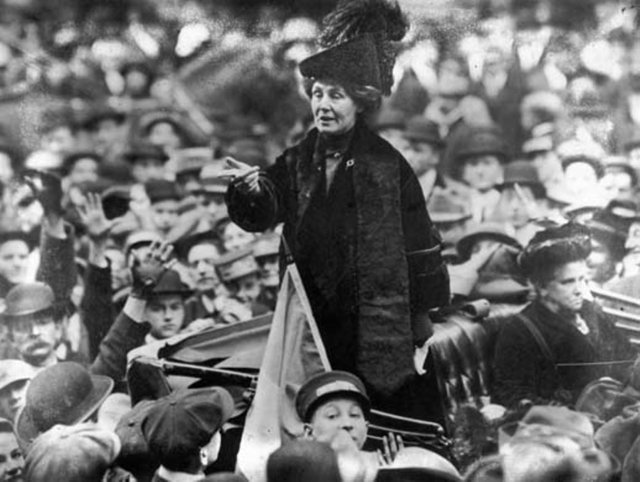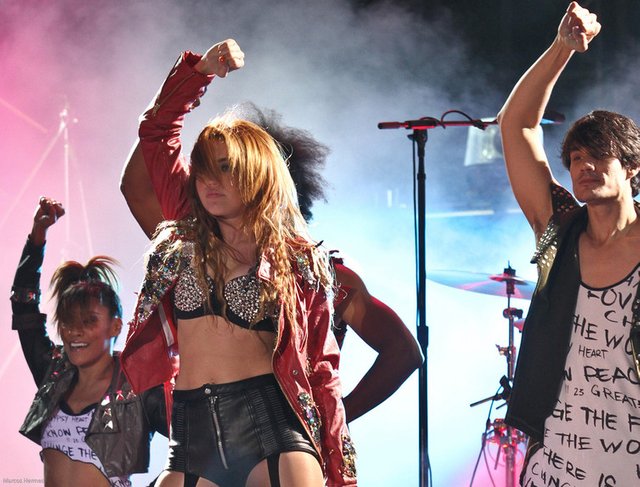| Rise of Feminism |
Taking up the battle of Victorian social reformers, suffragettes and the progressive women's activists of the 1970s, women's activists today are battling again for equivalent treatment and a conclusion to sexual viciousness in a 21st society that remaining parts patriarchal.It's a bustling time for women's activists in Britain. In late October, the new Women's Equality Party (WEP) lauched its arrangement program. It is squeezing for equivalent representation in governmental issues, business, and industry; approach pay and equivalent child rearing; break even with treatment of ladies by and in the media; and a conclusion to sexual brutality.

A couple days subsequent to going to the dispatch, I went to the Feminism in London gathering, which pulled in over a thousand ladies and men who had come to listen to a variety of speakers discussing issues as assorted as trafficking for local work, balance and severity, and the crusade for 50:50 representation in parliament. I was exceptionally energized, feeling part of a women's activist development "on the move".It's hazy what number of ladies or men self-distinguish as women's activist, and maybe the lion's share of individuals couldn't mind less one way or the other. In any case, whichever position you take, the historical backdrop of woman's rights shows that it changes private and open life – regardless of whether everybody is aware of this, or respects that change.
A brief history of women's activist time
The most recent two centuries have seen three rushes of woman's rights. Sadly the initial two took after a commonplace example: beginning open imperviousness to women's activist points took after by a time of social acknowledgment of what at first appeared to be irrational requests. At that point comes an end result, generally appearing as an accord that women's liberation has succeeded and in this manner made itself repetitive. After this ladies get to be at any rate openly tranquil about their social conditions until a tipping point happens and women's liberation ascends again like a phoenix from the fiery remains. This may well happen again.The first influx of woman's rights emerged amid the nineteenth century and the start of the twentieth century and worked for social change. Ladies, for example, Josephine Butler were worried with prostitution, and with the twofold standard of sexual ethical quality. Harriet Martineau, a fellow benefactor of human science, showed that any sociological examination of key political, religious and social organizations ought to incorporate the lives of ladies, while Emmeline Pankhurstcampaigned for ladies' entitlement to vote and to have full political citizenship.The second rush of woman's rights emerged in the 1960s, 1980s and was less worried about social change as transformation. This period was an age of political action. Australian author Germaine Greer contended that ladies' sexuality was subdued and killed by patriarchy, while British scholar Sheila Rowbotham portrayed the between relationship amongst free enterprise and patriarchy in misusing ladies' labour.In the 1990s the dialect of "post-women's liberation" started to emerge out in the open talk. Gratefully, it was charged, we can all breathe a sigh of relief now that ladies are equivalent in the place where there is sexual and sex legislative issues. Terms, for example, ladies' individual "strengthening" supplanted the possibility of aggregate activity. In spite of the fact that it was now and then perceived that male sexual brutality still existed, the methodology of resistance concentrated on ladies' rights to look and go about however they see fit, hazard or blame.But strengthening was lessened to sexual strengthening: second wave women's activists from the 70s were re-confined as "sex-negative". Rather, another rush of "sex-positive" ladies rejected woman's rights and, as per author Ariel Levy, were socially initiated to discover strengthening by looking and acting like porn stars. A couple days in the wake of going to the dispatch, I went to the Feminism in London gathering, which pulled in over a thousand ladies and men who had come to listen to a variety of speakers discussing issues as different as trafficking for household work, fairness and grimness, and the battle for 50:50 representation in parliament. I was extremely energized, feeling part of a women's activist development "on the move".It's hazy what number of ladies or men self-distinguish as women's activist, and maybe the larger part of individuals couldn't mind less one way or the other. However, whichever position you take, the historical backdrop of women's liberation exhibits that it changes private and open life – regardless of whether everybody is aware of this, or respects that change.
A brief history of women's activist time

The most recent two centuries have seen three floods of women's liberation. Lamentably the initial two took after a recognizable example: beginning open imperviousness to women's activist points took after by a time of social acknowledgment of what at first appeared to be outlandish requests. At that point comes an end result, typically appearing as an accord that woman's rights has succeeded and in this manner made itself repetitive. After this ladies get to be in any event openly tranquil about their social conditions until a tipping point happens and woman's rights ascends again like a phoenix from the fiery debris. This may well happen again.The first rush of women's liberation emerged amid the nineteenth century and the start of the twentieth century and worked for social change. Ladies, for example, Josephine Butler were worried with prostitution, and with the twofold standard of sexual profound quality. Harriet Martineau , a fellow benefactor of human science, showed that any sociological examination of key political, religious and social organizations ought to incorporate the lives of ladies, while Emmeline Pankhurst battled for ladies' entitlement to vote and to have full political citizenship.The second flood of women's liberation emerged in the 1960s, 1980s and was less worried about social change as upheaval. This period was an age of political action. Australian essayist Germaine Greer contended that ladies' sexuality was restrained and killed by patriarchy, while British scholar Sheila Rowbotham depicted the between relationship amongst private enterprise and patriarchy in abusing ladies' labour.In the 1990s the dialect of "post-woman's rights" started to emerge out in the open talk. Gratefully, it was affirmed, we can all breathe a sigh of relief now that ladies are equivalent in the place where there is sexual and sex legislative issues. Terms, for example, ladies' individual "strengthening" supplanted the possibility of aggregate activity. In spite of the fact that it was in some cases perceived that male sexual savagery still existed, the methodology of resistance concentrated on ladies' rights to look and go about however they see fit, hazard or blame.But strengthening was diminished to sexual strengthening: second wave women's activists from the 70s were re-confined as "sex-negative". Rather, another influx of "sex-positive" ladies rejected women's liberation and, as indicated by author Ariel Levy, were socially prompted to discover strengthening by looking and acting like porn stars.
A phoenix ascending from the fiery remains
A couple of years into the 21st century and a tipping guide started toward happen once more. In 2005, Levy contended that when ladies sexually typify themselves and other ladies this is not a signifier of the accomplishment of women's liberation and ladies' equity with men, but instead woman's rights' downfall.New developments started to rise which came back to the possibility that all is not well with sex relations. Laura Bates started the online Everyday Sexism Project and Kat Banyard helped to establish the battling bunch UK Feminsta and expounded on the deception of ladies' equity. She is presently representative for the End Demand for prostitution battle and a blunt pundit of Amnesty International's strategy choice that prostitution ought to be de-criminalized, contending it is minimal more than a pimp's charter.Unfortunately the sexual, racial and financial disparities of a patriarchal society haven't vanished due to women's activist political movement. These social structures are amazingly determined, in spite of the fact that they shape-move as indicated by changed chronicled and political conditions. By and by, while any rush of woman's rights is surging, genuine lawful and political additions are made that change every one of our lives for the better.The history of women's liberation appears to propose that this third wave, which is as of now assembling energy, may realize individual and open changes, for example, an expansion of ladies MPs, open familiarity with male sexual savagery, affectability to the sex pay crevice and to ladies' basic financial impediment. In any case, then history proposes women's liberation itself will tragically blur away.If my expectation of a definitive fall of the third wave ends up being valid, how about we move with speed and fervency while we can. The lives of ladies, kids and men will be incomprehensibly progressed. Long may it last.
~Thanking You
Ishan Pandey
feminism is over rated , women should have no rights like in my country .
Home dogs should not be free .
Girls should be like sex toys as that we can use them . This is my view they should be able to curb a mans sexual desire. In Pakistan we love ur womens but they should follow rules and behave .
first 2 technical points:
You have to watch out for sentences ends. You often forget a space.
Then make a free line under the pictures, it looks better.
Okay, now: How does the party you spoke of wants to reach 50% representation?
Did they mention anything about sexual brutality/abuse from woman? Or only of woman?
I think a feminist party should also fight sexual attacks coming from woman (estimated to be 1/4).